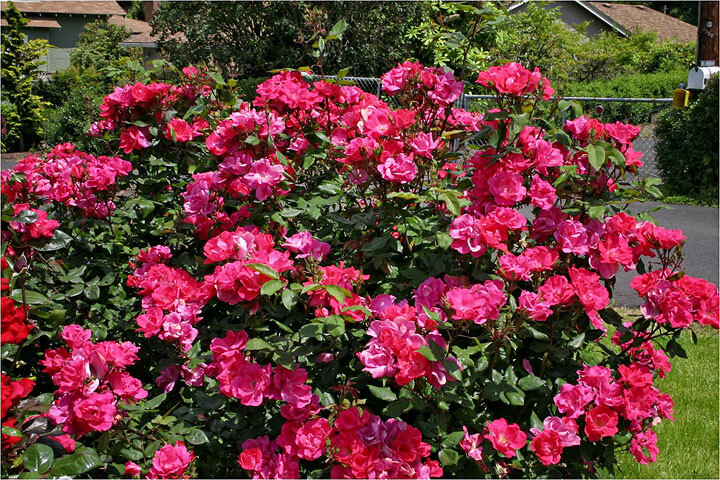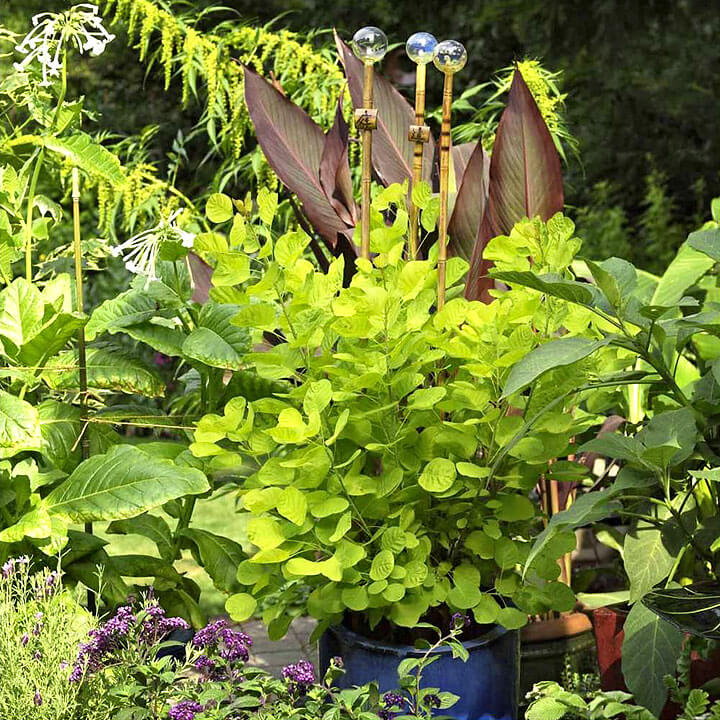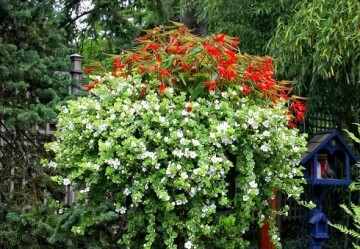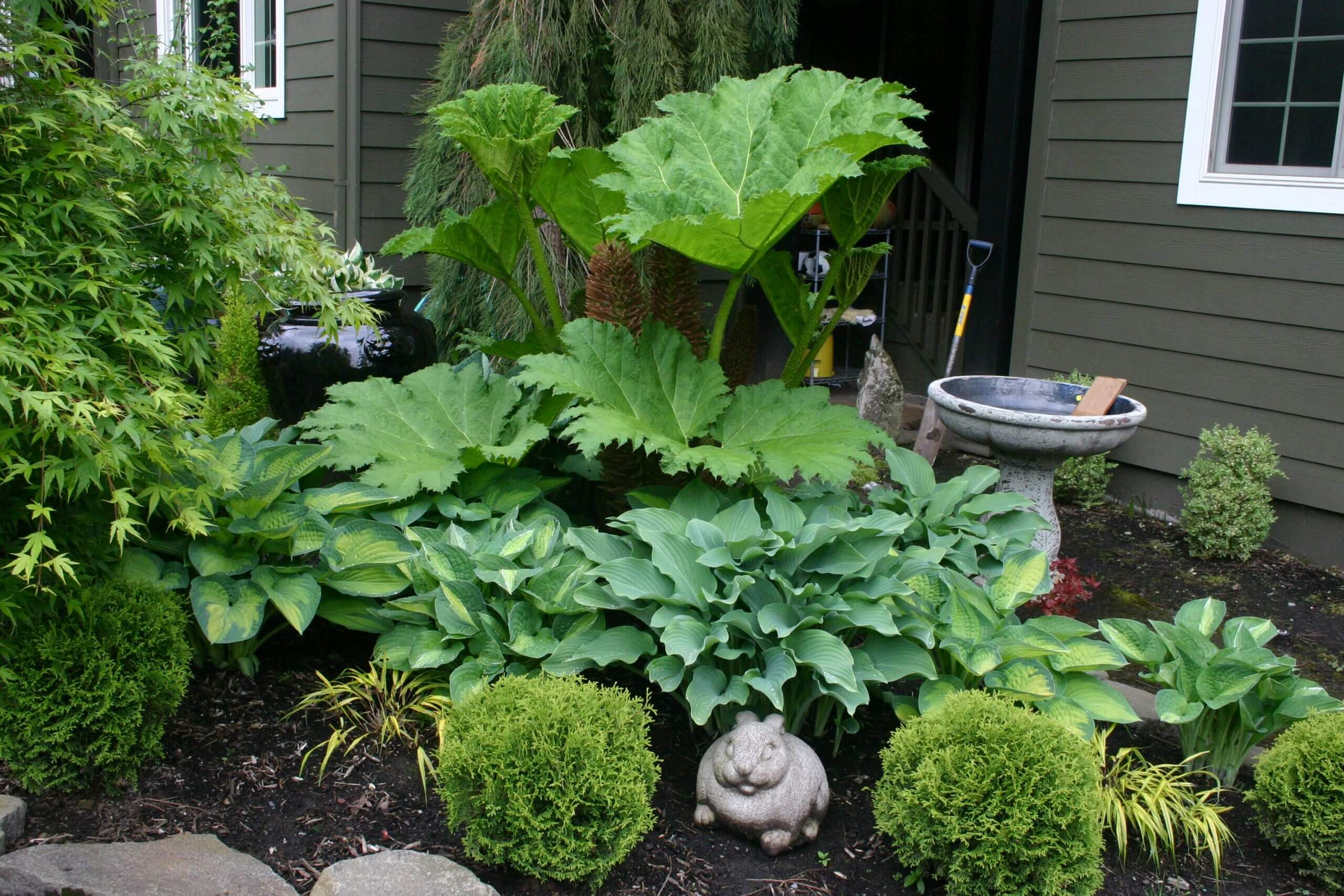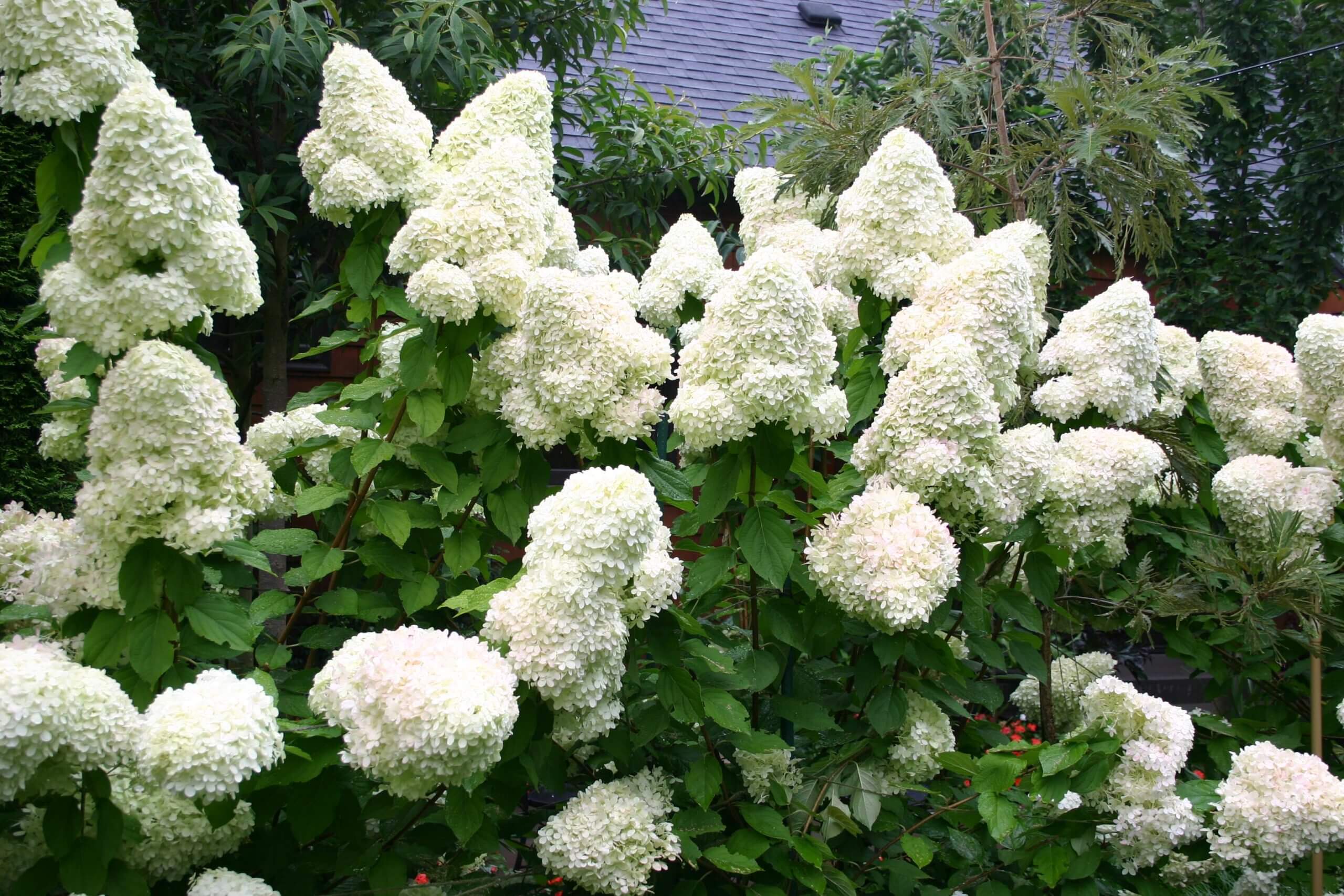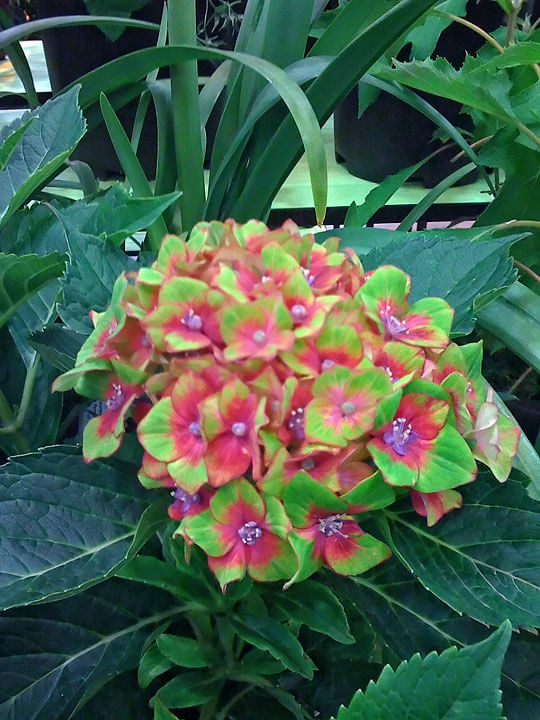
At the recent Farwest Show (national nursery trade show held in Portland, Oregon), there was a section call “New Varieties Showcase”. New and recently introduced plants were exhibited and participants were given ballots and asked to vote for their favorite plant. The People’s Choice Award was given to Hydrangea macrophylla ‘Horwack’ Pistachio. Commonly known at the Pistachio Hydrangea, this Hydrangea has flowers that are scarlet-red and green with violet centers. The flower color changes as the bloom ages which makes a very visual interesting feature. The plant tends to be a compact grower and likes a well drained soil. To avoid summer burning of leaves and flowers, give it some protection from the hot afternoon sun and plant in a well drained soil. Black Gold Garden Compost Blend is a good amendment to maximize your soil’s potential. This would make an excellent container plant for a deck or patio.
Tag: Mike Darcy
Feeding the Late Summer Garden
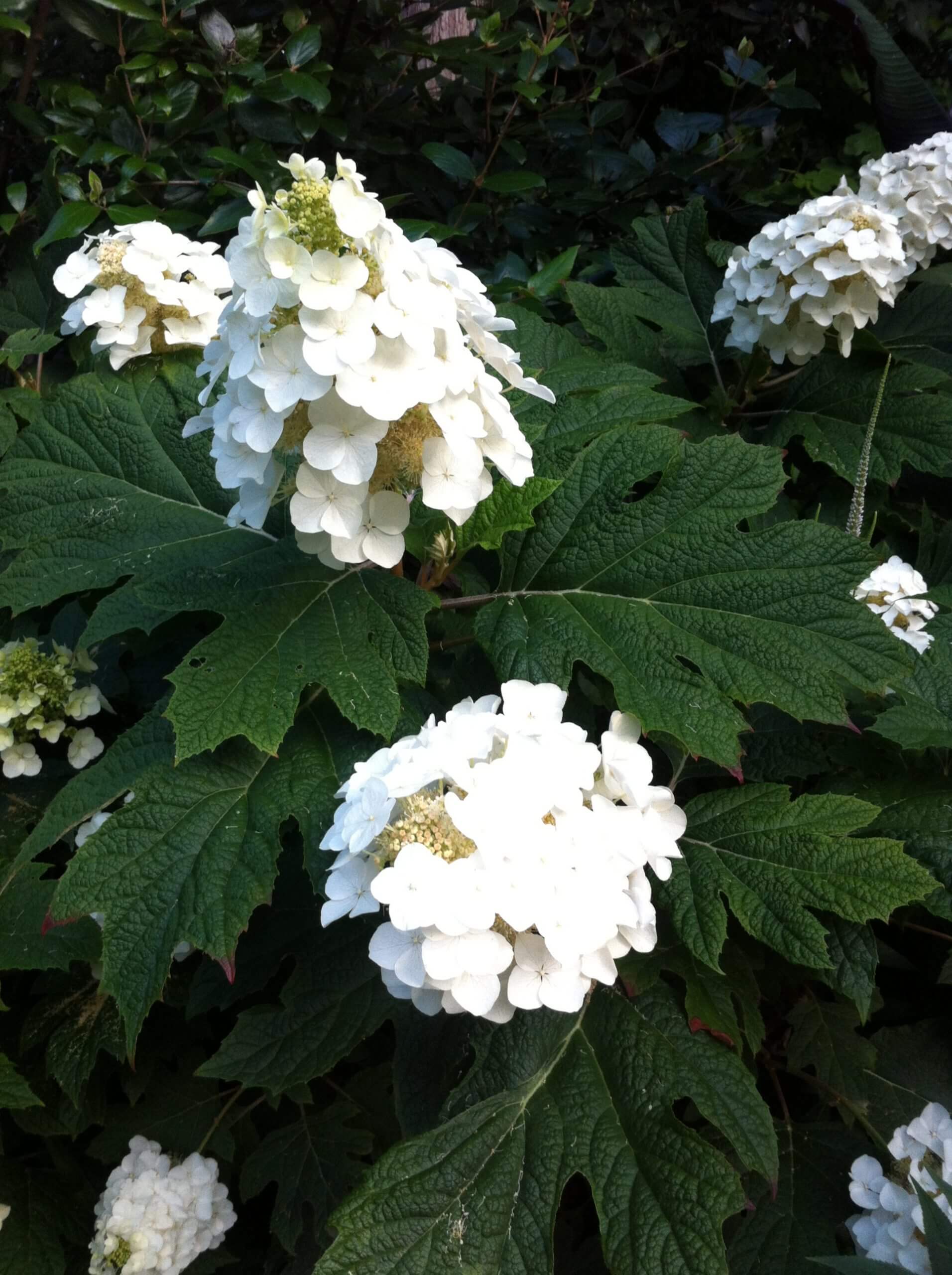 Now that the spring season is over and we are already into August, I wonder “where did the summer go”? With so many things going on in the spring and early summer garden, now is certainly the time to relax a bit and enjoy the fruits of your labors. I am not suggesting you do nothing in your garden, as there is always some maintenance to do, but at this time of year the labor is not so intense. And if you follow a few late summer gardening tips you will be sure to enjoy those fruits well into the fall season. Feeding the late summer garden is a good start.
Now that the spring season is over and we are already into August, I wonder “where did the summer go”? With so many things going on in the spring and early summer garden, now is certainly the time to relax a bit and enjoy the fruits of your labors. I am not suggesting you do nothing in your garden, as there is always some maintenance to do, but at this time of year the labor is not so intense. And if you follow a few late summer gardening tips you will be sure to enjoy those fruits well into the fall season. Feeding the late summer garden is a good start.
If you have rose bushes, between now and mid-September, it is a good time to give them a final application of rose fertilizer for the year. I particularly like to use an organic fertilizer that is slow release. A quality flower fertilizer is ideal and applying now will encourage flowering throughout the fall season. I like to cultivate the fertilizer lightly into the soil and then give the plants a thorough watering.
As I visit other gardens this season, I see more and more vegetable gardens being planted. Home vegetable gardens are cropping up in landscapes with limited space and not necessarily in what we think of as a traditional vegetable garden. Just within my immediate neighborhood there are two rather unique vegetable gardens. One is in the space that was previously a lawn and another is in a space that is directly along the road. We would probably not have seen either of these locations used for vegetables a few years ago.
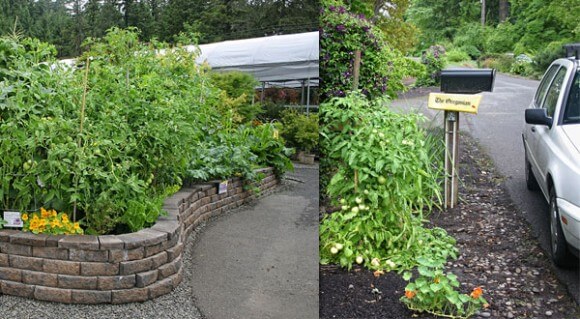
Another example of a unique vegetable is one that appeared recently at a local garden center. A raised bed vegetable garden was created in a space that had formerly been part of the garden center walkway. It was made by using pavers for the sides and then filled with top soil and then amended with organic soil conditioner and organic fertilizers. This proved to be an ideal demonstration garden to show home gardeners how easy it is to make a raised bed and that one can be built over almost any type of surface, even a driveway.
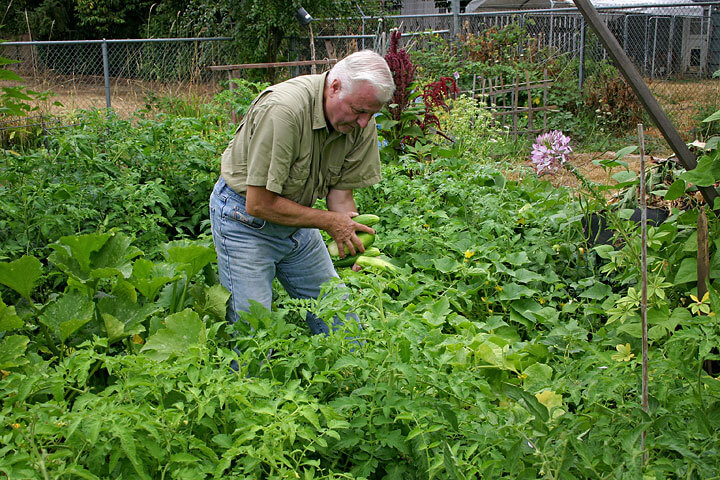
For those with limited space, or perhaps limited sunlight, consider a community garden. I am amazed at the prolific community vegetable gardens that are scattered throughout the city. These community gardens have become so popular in Portland that there is almost always a waiting list for those wanting their own plot. I have a friend, ‘Joe’, that was able to get two plots at his local community garden and he has diverse plantings and reaps a prolific harvest. The other huge benefit of a community garden is that it becomes an opportunity to meet other gardeners from your neighborhood and helps as a community building tool. Most gardeners love sharing ideas and it is hard to think of anything better than growing vegetables side by side with someone of like interests. Not only can you share the harvest, but sharing ideas on what you grow and how can be a great way to pick up new ideas for your own plot and to meet a new gardener.
For vegetables that continue to produce into the fall, consider giving them a final application of an organic fertilizer formulated for vegetables. I always like to lightly work the soil, apply the fertilizer and then water.
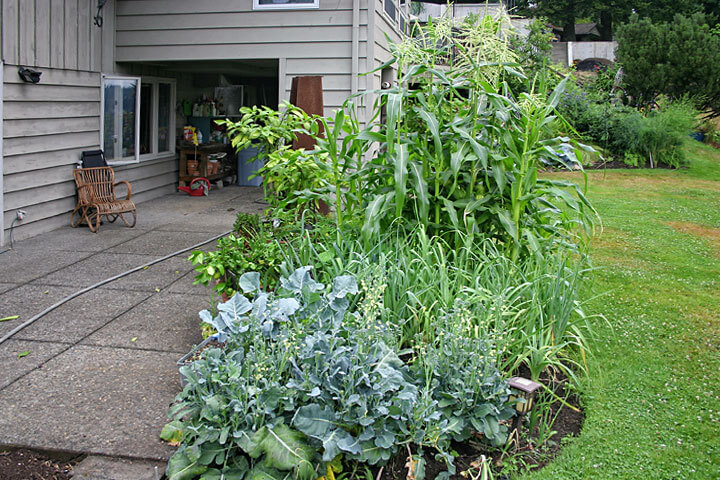
Late summer can be a stressful time for many container plants and hanging baskets. With the container being a limiting factor with regard to a plants source for fertilizer plus the constant watering required, nutrients in a container garden can easily be depleted. This is a good time to add some all-purpose organic fertilizer as this can give plants a much needed boost.
While this is just August, it is time to be thinking about a fall vegetable garden. As summer crops fade, consider the space as potential for an entirely new crop to grow and harvest in the fall and winter. If the soil has been used for a summer vegetable garden, it would be wise to amend it by adding organic matter with a product such as Black Gold Garden Compost Blend. This same time would also be an ideal opportunity to add in some fertilizer. Then as you remove your summer vegetable plants, and the soil is prepped, you are ready to plant. As a general rule, it is best not to plant the same crop in the same location year after year. Mix things up and perhaps, where you had tomatoes, plant peas.
Always remember that gardens are meant to be enjoyed. In my own garden, while there are always many tasks that need to be done, I do like to take some time, especially in the morning, and casually walk through it. What a delight it is to see plants in the coolness of the morning, hear the birds chirping and letting my mind relax.
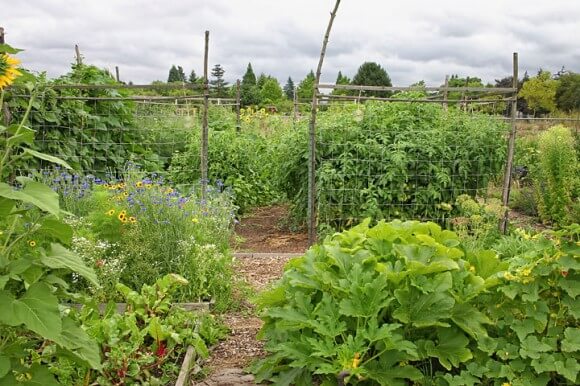
Janet’s Lettuce Windowbox
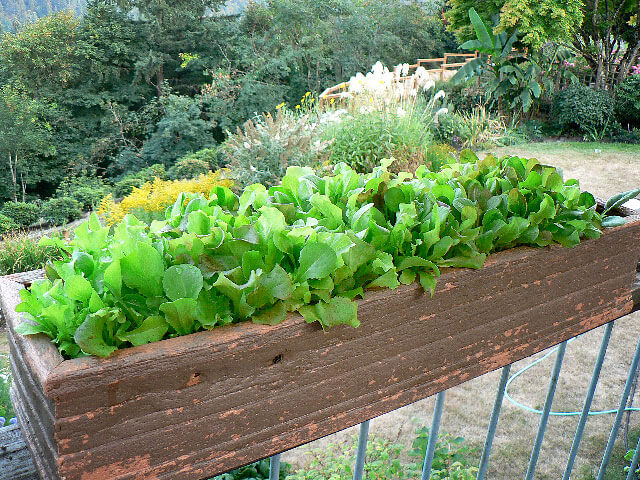 When I visit other gardens I am often intrigued by things I see other gardeners do. Janet Livesay, in Lake Oswego, Oregon, had a planter that fit over the railing of her deck. She used Black Gold Natural & Organic Potting Soil and planted lettuce from seed.
When I visit other gardens I am often intrigued by things I see other gardeners do. Janet Livesay, in Lake Oswego, Oregon, had a planter that fit over the railing of her deck. She used Black Gold Natural & Organic Potting Soil and planted lettuce from seed.
Since the deck is by a door to her kitchen, she could easily cut the lettuce whenever she was making a salad. She was innovative with wanting to harvest lettuce over a long period and so she also planted seeds in small nursery pots at various intervals throughout the summer. When the lettuce in the planter was past its prime, she simply replaced it with new plants. And with the planter being off the ground, she did not have to worry about slugs eating the lettuce.
Growing Okra in Oregon
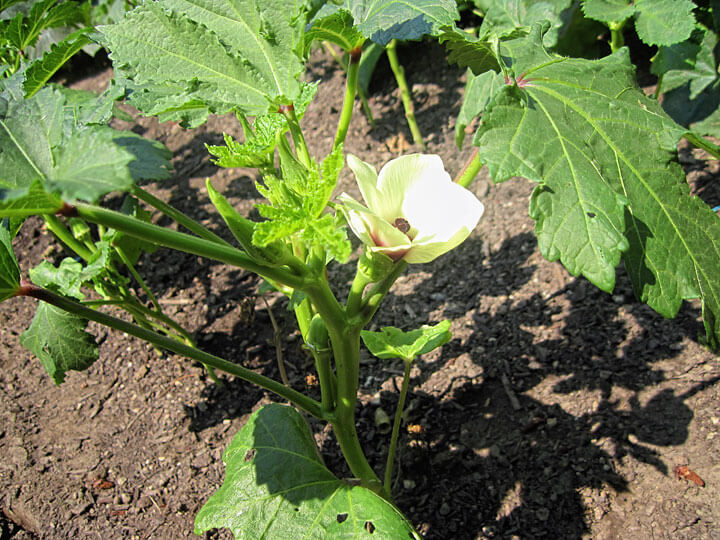
On my weekly radio show, I not only get questions from gardeners, but I often get comments and information that others want to share. It is especially interesting when a caller discusses plants that I am not familiar with. Several weeks ago I got a call from Susanne in Aloha, Oregon, and she wanted to tell me about how she was growing okra in Oregon.
Okra is not a common crop in Oregon and I have never seen it growing in a home garden. Actually, I don’t think I have ever seen it growing in any situation. Susanne started her plants from seeds in Black Gold Seedling Mix and waited until it was warm before she planted them in her garden. The plants are now flowering and producing pods. Susanne reports that the pods should only be about two inches long when picked. With the hot weather we are currently experiencing, I would think her okra plants would thrive. Judging from the photos, I think Susanne is going to have a good crop. Thanks for sharing, Susanne!
Is anybody else out there having success growing a plant that wouldn’t normally be thought to thrive here in Oregon, or wherever you are? Leave a comment below and tell us about it.
Golden Spirit Smoke Tree for Container Gardening
Sometimes a plant that we think of as growing to 15 feet in height or more, can actually be kept quite small by severe pruning. I have a Cotinus coggygria ‘Golden Spirit’ (Smoke Tree) growing in a pot on our deck and it has been in the same pot for 6-7 years. In the winter, I prune the branches back to 12-18 inches, lift the plant out of the pot and add fresh Black Gold All Purpose Potting Soil as the plant goes back into the pot. ‘Golden Spirit’ smoke trees have leaves that are lime green in early spring and turn to chartreuse in the summer. They make excellent container plants, especially when there are plants with dark green foliage surrounding them. This Cotinus makes a great summer foliage plant and while it will not bloom because of the severe pruning, the leaves more than make up for the absence of flowers.
Garden Mulch To Reduce Summer Watering
July in my garden means lots of color, and flowers that attract hummingbirds are an added bonus. I always like to have some large planters and several years ago purchased some wrought iron plant stands that were specially made for a large nursery pot to sit in the top. I planted the pots in late April with 4” pot size plants and am now reaping the rewards.
My plants of choice for the past few summers, and I always have at least one pot with this combination, is Begonia ‘Bonfire’ and white bacopa (Sutera cordata). I place the begonia plants in the center of the pot and the bacopa around the rim. The begonias tend to grow upward and then flop while the bacopa trails over the sides and by mid July has covered the outside of the pot with a mass of white flowers. The begonias have been in bloom since the time they were planted and are hummingbird magnets.
Black Gold Waterhold Cocoblend Potting Soil is ideal to use in pots like these that are exposed to the elements, as the coconut fibers have great water holding capabilities and this makes the pots less likely to dry out on a hot day. It also reduces the amount of water needed in each pot and I have found that what once was a daily water requirement, I can often go two or three days between watering.
In earlier articles, I have mentioned the importance of a garden mulch and that I used Black Gold Soil Conditioner when planting new plants. The positive effect of using this product earlier in the season is paying benefits now. As summer has arrived and we are having warmer weather and few rainy days, the soil is beginning to become dry and many plants need supplemental water. The use of Black Gold Garden Compost Blend has helped retain moisture in the soil and less water is required than if it had not been used.
Even though it is July, it is not too late to apply Black Gold Soil Conditioner to the soil around established plants. I like to mix it in with the existing soil and I will gently cultivate it into the first 2-3 inches of soil and then water. Some plants tend to need more water than others and here is where Black Gold Just Coir can be used. This product is actually coconut coir pith and its’ water holding capacities are amazing. Working Black Gold Just Coir into the top few inches around plants that like some extra moisture can be a huge benefit.
Three plants I have found that will greatly benefit from the use of Black Gold Just Coir mulch are Gunnera, Hosta, and Hydrangea. My experience has been that all three of these plants tend to like a moist soil environment. Gardeners grow hosta primarily for their foliage and having sun burned crisp foliage tends to ruin the appearance of the plant. While there are some hostas that will tolerate more sun than others, I have found that regardless of their exposure, they tend to benefit from a moist, well drained soil.
Gunnera, some garden centers will label this as “Dinosaur Food” since it is a plant left over from pre-historic times, can be a wonderful focal feature in a garden. Gunnera is known for its huge leaves that often measure over three feet across appearing on long stalks that can be eight feet in height and with features like this it is definitely a conversation plant. Gunnera likes moisture and fertilizer and plants are often seen growing near ponds and on banks of streams. The plants do not like to be in standing water but like their roots to be moist. Using Black Gold Just Coir can help to hold moisture and Black Gold All Purpose Potting Mix is a good natural fertilizer which I apply three times a year on my Gunnera.
Hydrangeas are such magnificent summer blooming shrubs that I cannot imagine my garden without some. One of my favorites is “Limelight” and now in mid-July my plants are just coming into flower. While I have seen Hydrangeas planted in full sun, I have found they do much better with some protection from the hot afternoon sun. They also like moisture around the base and Black Gold Just Coir is ideal.
Summer is here and we should enjoy it and our garden and the less maintenance we have, the better. Watering plants on hot days can be time consuming and with the addition of some soil mulch amendments around plants, we can spend less time in maintaining and more time enjoying.
Banana Plants in Oregon!
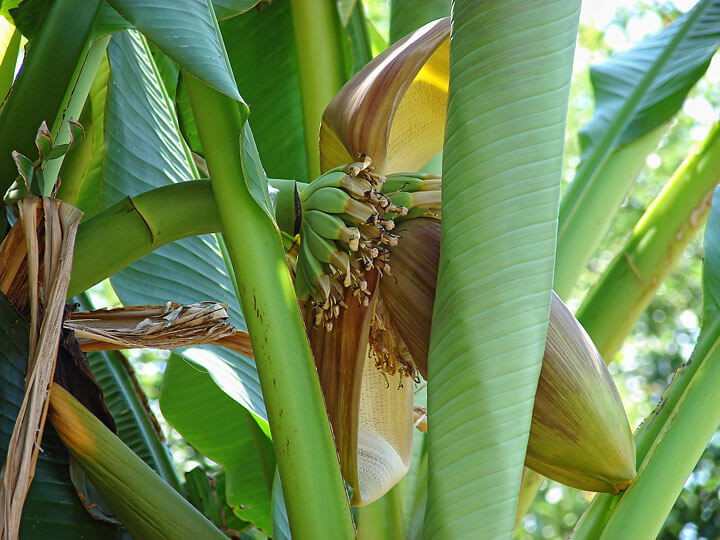
In the late 1990’s, I was surprised to learn there was a banana plant that was hardy enough to thrive in Portland, Oregon. Yes, I was skeptical, but I tried one and it has survived and multiplied by sending up many new “pups”. This particular banana is Musa basjoo and is root hardy, meaning in the winter the top may die to the ground but the roots survive and the plant will emerge in the spring. Due to our mild winter this past year, I am hearing from gardeners telling me they have plants that are blooming. West Linn, Oregon gardeners Kathy and Harvey Anderson sent me this photo of their 17-foot tall banana with this very large and unique flower. Notice the bananas forming behind the flower. It is quite a novelty having banana plants bloom in Oregon!
Water for Birds in the Garden
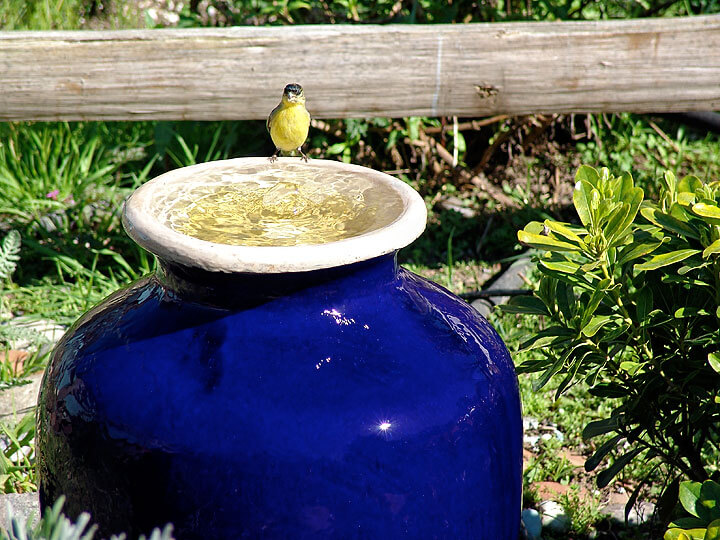
With summer here and many parts of the Pacific Northwest having warm days and little or no rain, it is important not to forget to supply a source of water for birds in the garden. In my own garden, I have several water features and it is very enjoyable to see the diversity of the birds and to watch them come to get a drink. To prevent mosquitoes, always keep the water running, or if that is not possible, such as in a bird bath, rinse the container every couple of days and add fresh water daily. If you have a water feature that does not have running water and would not be practical to rinse often, add a Mosquito Dunk to prevent mosquitoes from breeding. It is harmless to birds and prevents mosquito larvae from maturing. An adult female mosquito can lay eggs in something like 2 tablespoons of standing water, so be aware. Don’t let them ruin your summer evenings in the garden.
Canna ehemanii
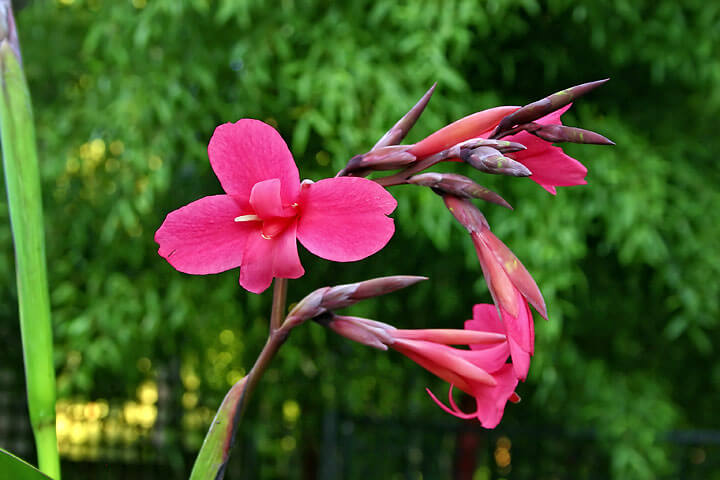
I am always on the lookout for new plants and several years ago, looking through a catalog for Old House Gardens, I came across Canna ehemanii. This canna dates back to 1863 and the catalog description said it was “topped by arching sprays of dangling, bell-shaped, deep rose flowers”. The description is correct and this canna has been in a large pot in my deck for the past several summers. It has been in bloom for about two weeks and will continue blooming through the summer. It will reach about 6 feet in height and makes a grand showing of color. I have never seen it for sale at a retail garden center and mail order may be the only option. It is worth the search.
Red Tiger Plant
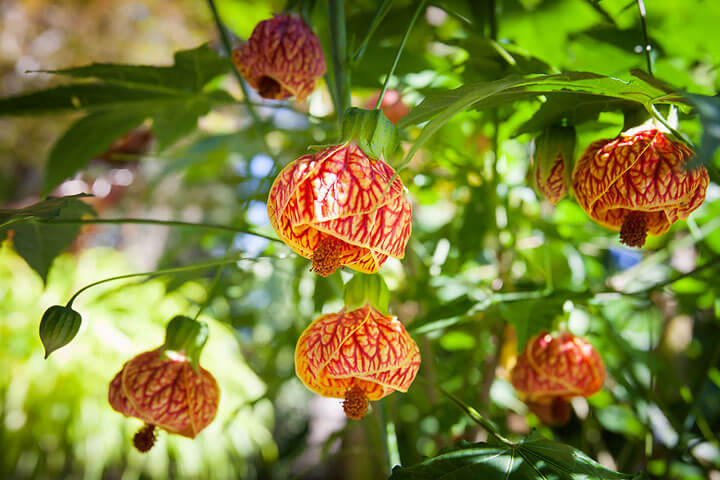
This past January I discussed the beautiful and unique Abutilon ‘Red Tiger’, also called a Red Tiger Plant, and how it could be a house plant in the winter and then taken outside. My plant is now outside and coming into full bloom with many flower buds just forming which indicates it will be blooming for a long time.
I have found that once they begin blooming, they continue through the summer and well into the fall. The intricate coloring of the flowers would be hard to duplicate unless it was an art piece created in stain glass. Abutilon ‘Red Tiger’ should be readily available in garden centers and plants should be in bud or bloom.


